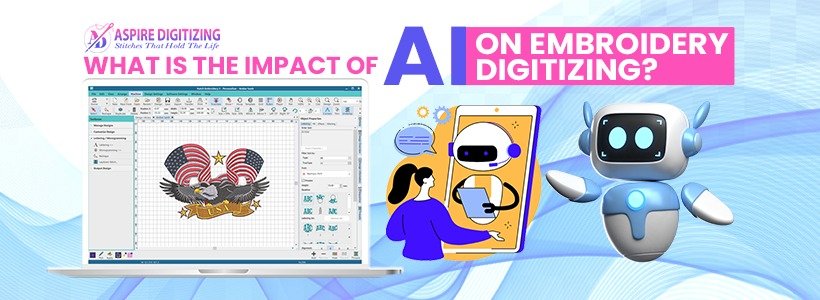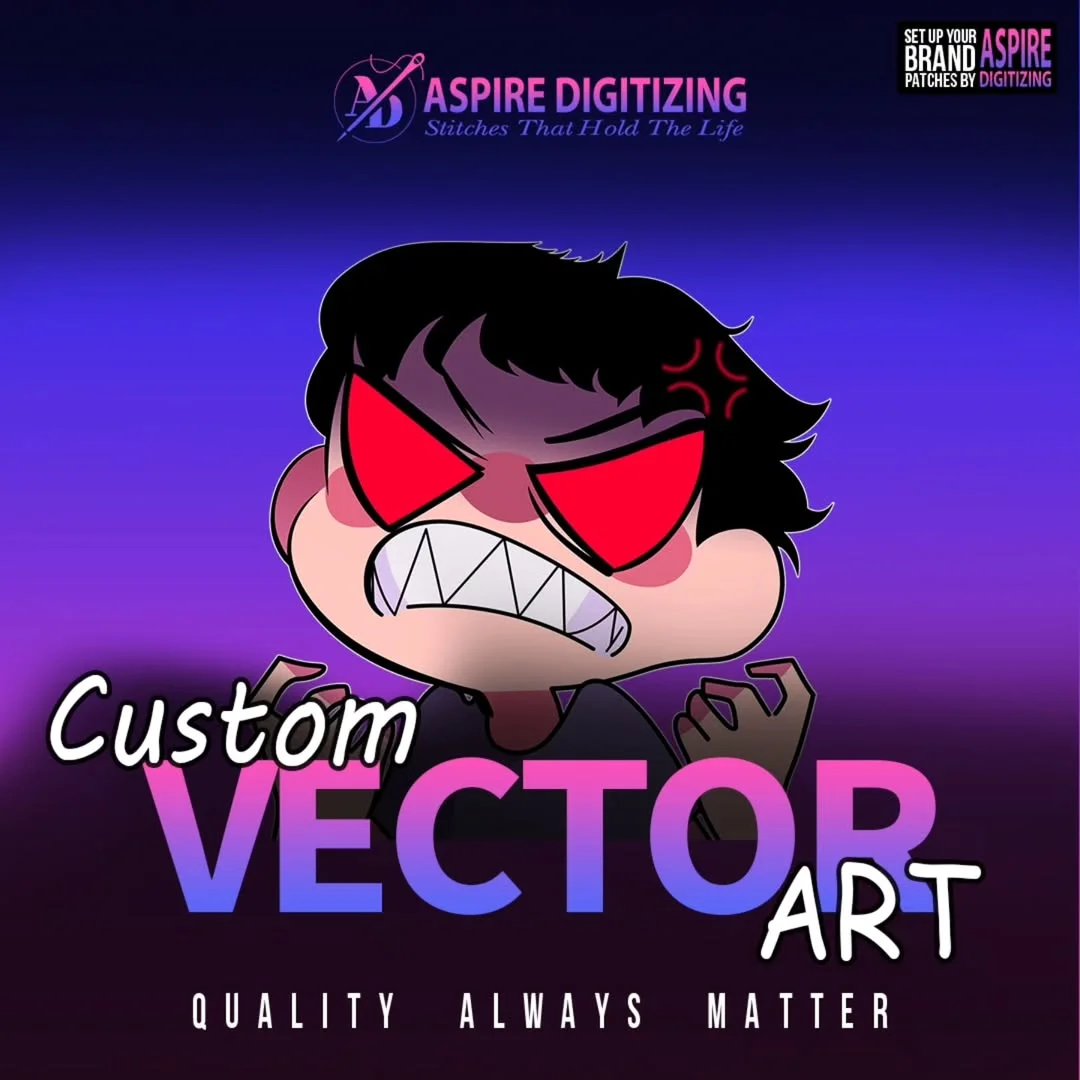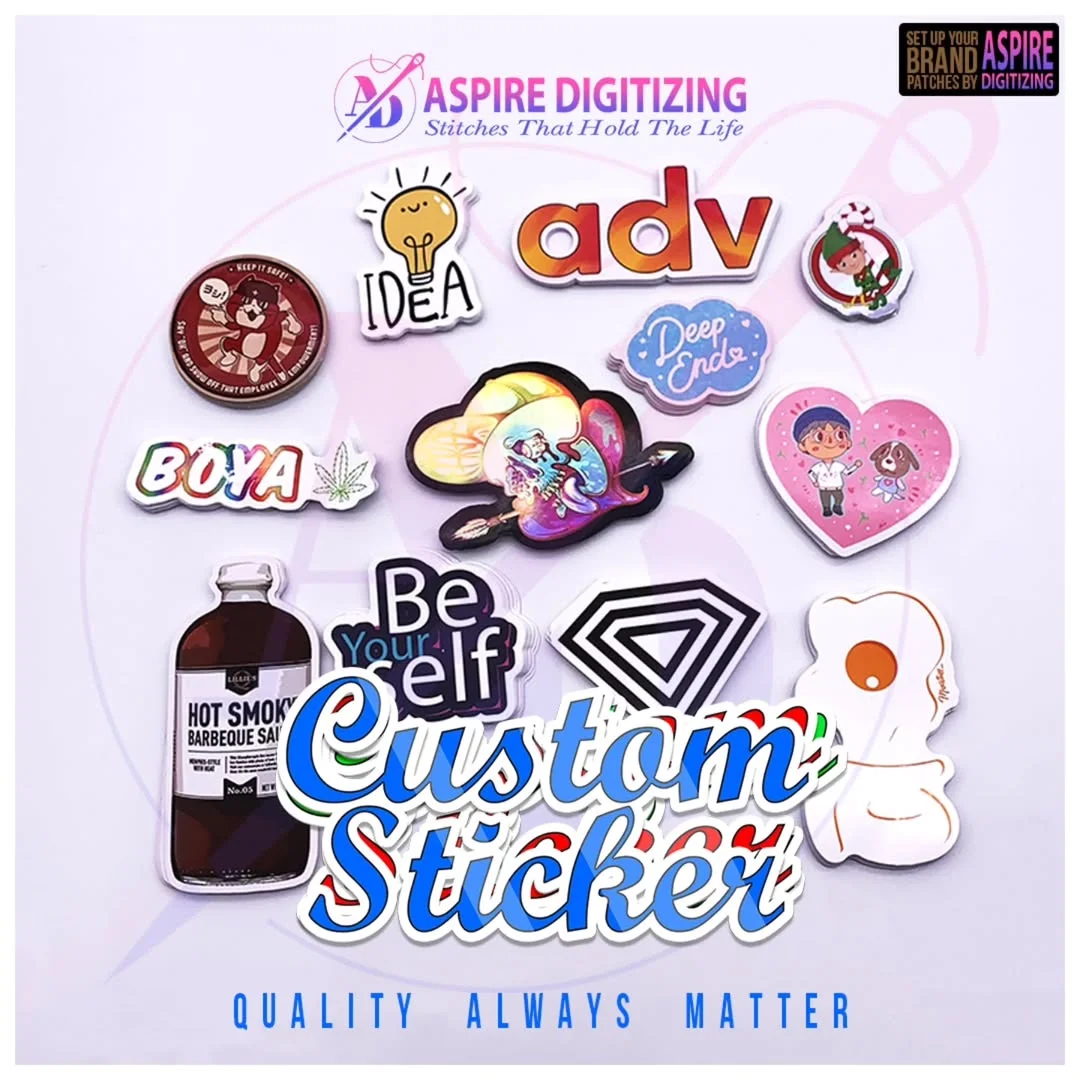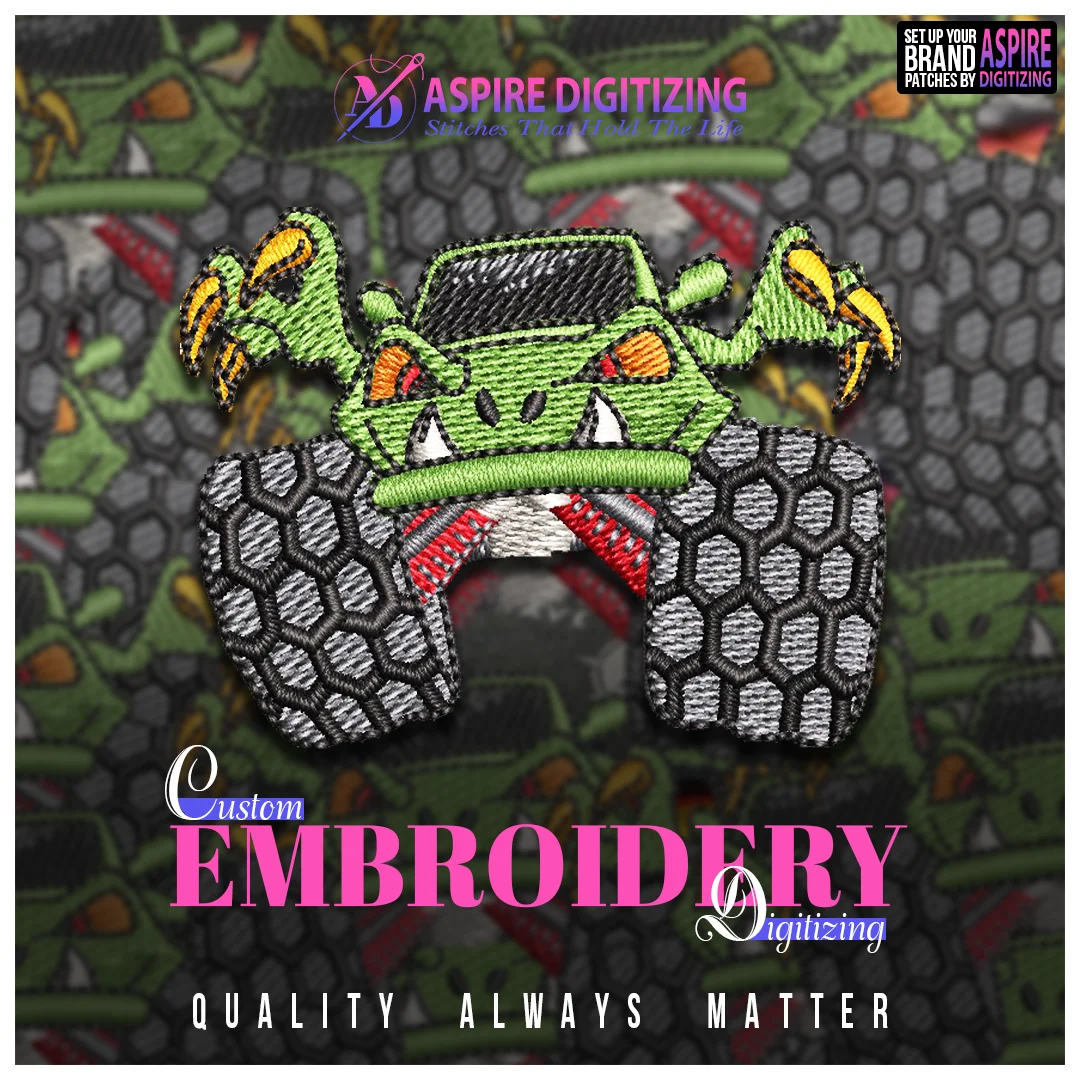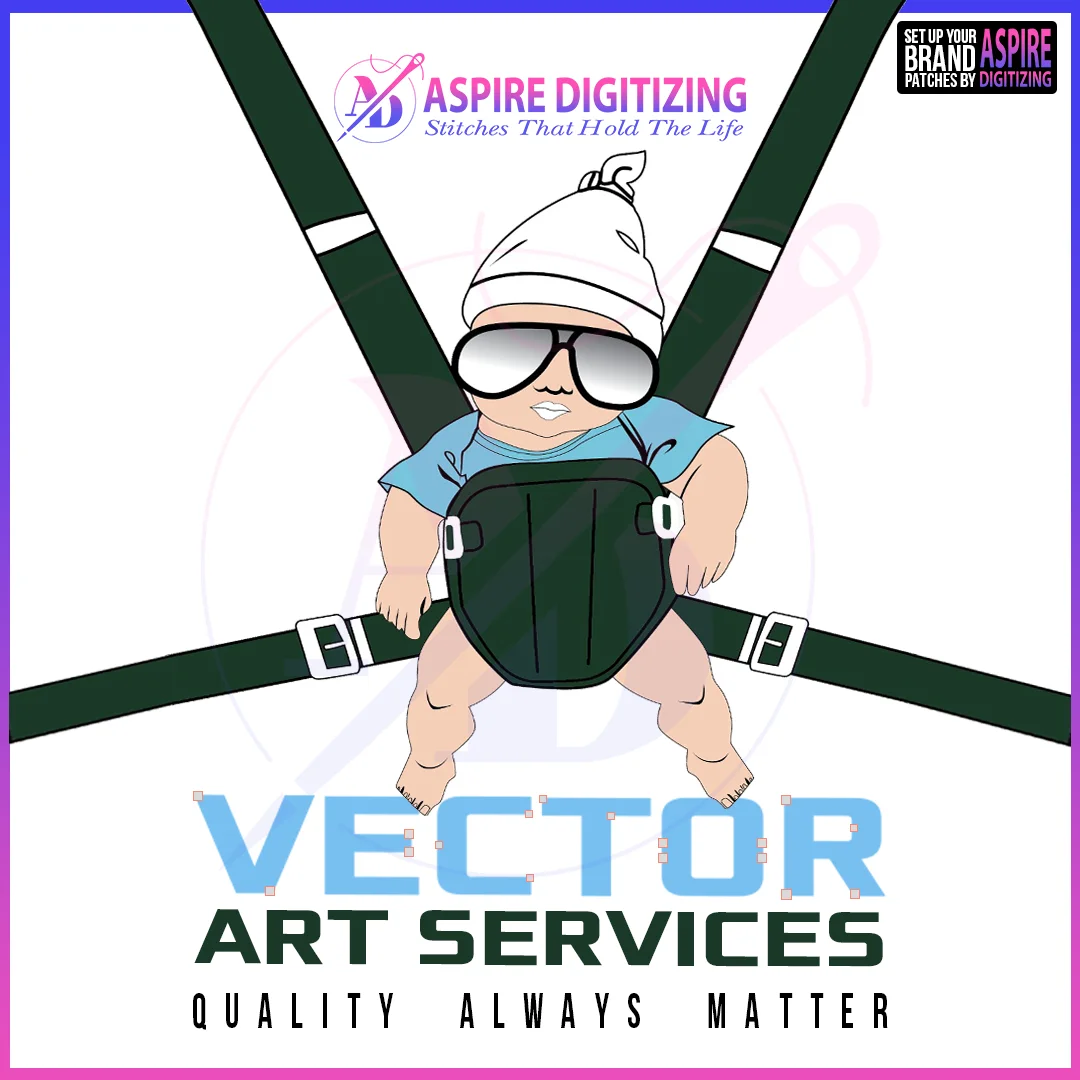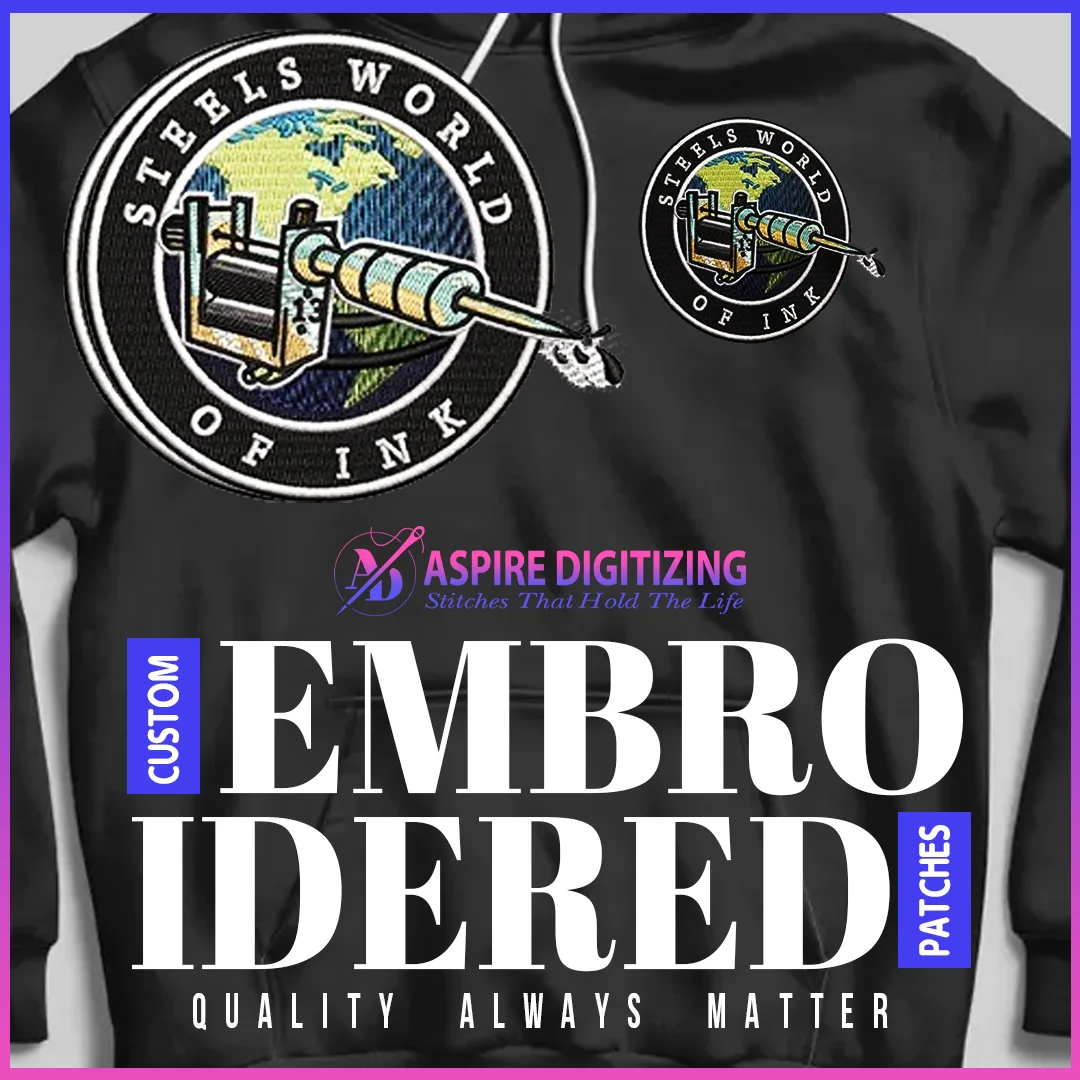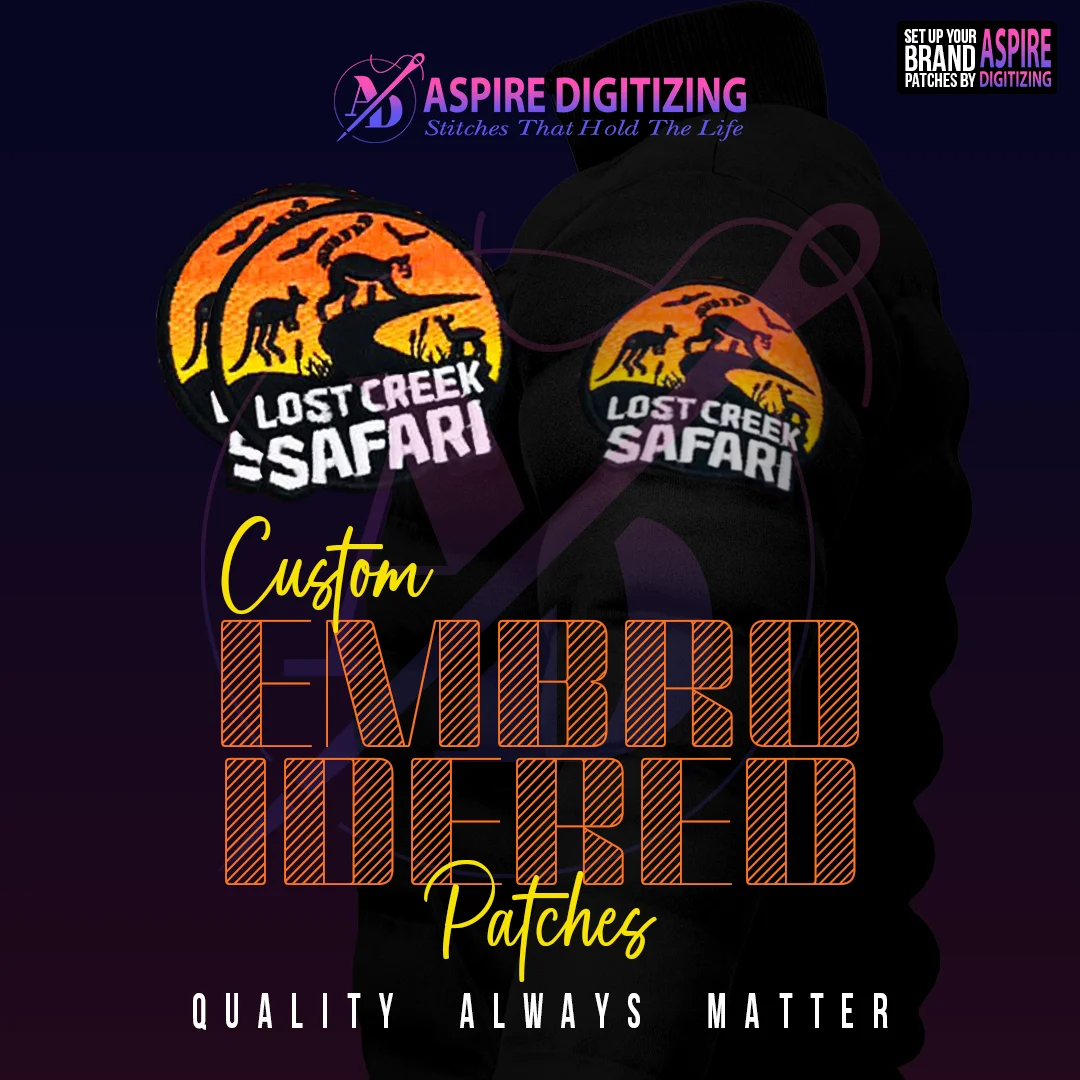The integration of Artificial Intelligence (AI) into embroidery digitizing services is revolutionizing the way designs are created and stitched. AI enables the rapid transformation of complex images into stitch files, minimizes errors, and even recommends optimal stitch paths automatically. This not only saves time but also enables the creation of flawless embroidery designs with minimal manual effort.
But is AI just a passing trend, or is it genuinely transforming the embroidery industry for the better? Let’s explore how AI is reshaping embroidery digitizing services and what the future holds.
How AI is Transforming Embroidery Digitizing Services
AI is making embroidery digitizing services faster, more precise, and highly efficient. With AI-powered embroidery software, digitizers can rapidly convert images into stitch files without sacrificing detail. These tools automatically identify patterns, suggest appropriate stitch types, and correct errors, saving time and reducing manual effort.
AI also enhances customization by enabling users to create unique designs effortlessly. As AI continues to advance, traditional embroidery methods are evolving, becoming more accessible and dependable. This progress not only increases productivity but also opens new avenues for delivering high-quality embroidery products efficiently.
Key AI Technologies Driving Innovation in Embroidery Digitizing
Here are some cutting-edge AI technologies enhancing embroidery digitizing services:
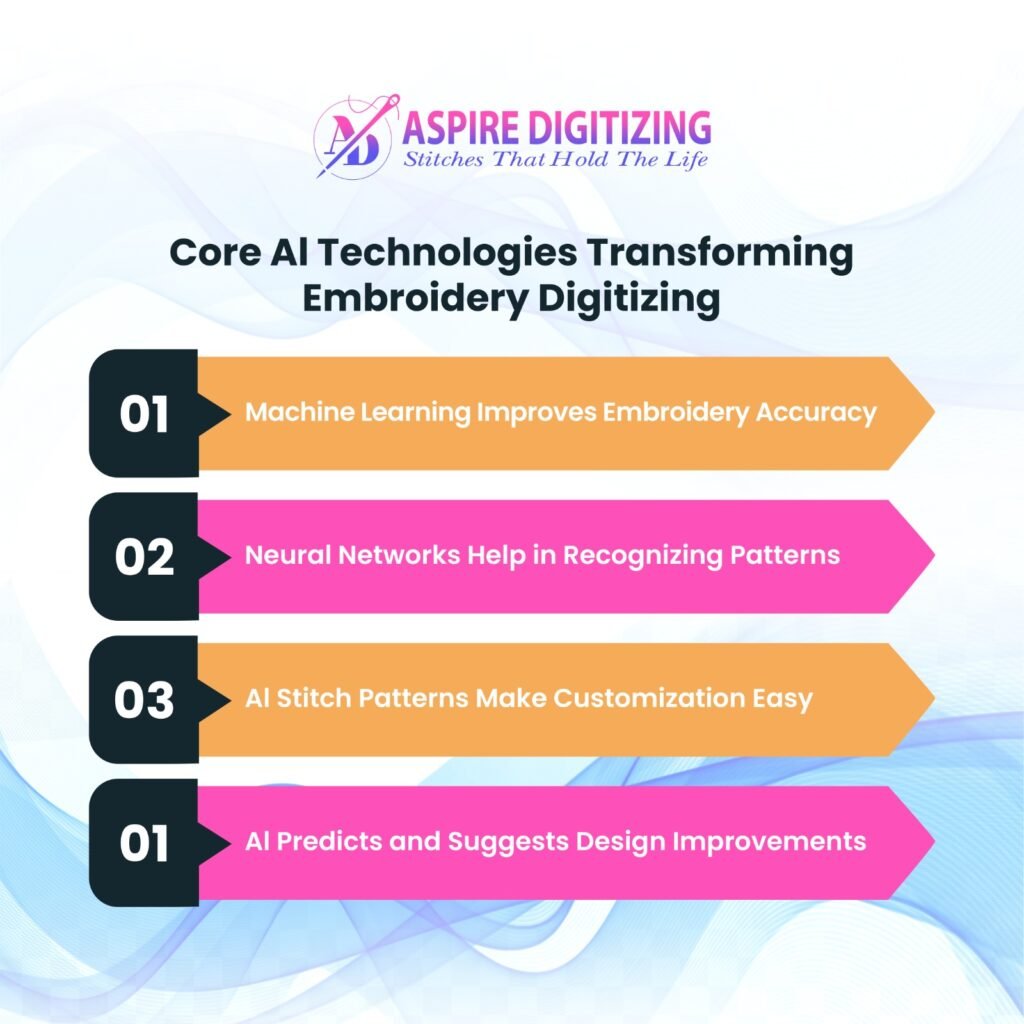
Machine Learning for Enhanced Accuracy
Neural Networks for Pattern Recognition
Smart Stitch Pattern Customization
Predictive AI for Design Improvements
1. Machine Learning for Enhanced Accuracy
Machine learning enables AI to learn from previous embroidery designs, improving future output. It can identify common errors, choose the right stitches, and deliver consistent results, ensuring professional, high-quality embroidery every time.
2. Neural Networks for Pattern Recognition
Neural networks function like a human brain, analyzing complex patterns in images and converting them into precise stitch files. They help digitize even intricate designs by understanding minute details.
3. Smart Stitch Pattern Customization
AI simplifies customization by recommending the most suitable stitch types and sequences for any design. It also adjusts stitch paths automatically to avoid overlaps or gaps, ensuring smooth and accurate stitching.
4. Predictive AI for Design Improvements
AI uses data from previous designs to suggest enhancements. Whether it’s adjusting stitch density, color combinations, or fabric type, AI helps make smarter decisions quickly, improving the final embroidery outcome.
Boosting Efficiency in Embroidery Digitizing with AI
AI technology is making embroidery digitizing services faster and more reliable. Here’s how AI enhances efficiency:
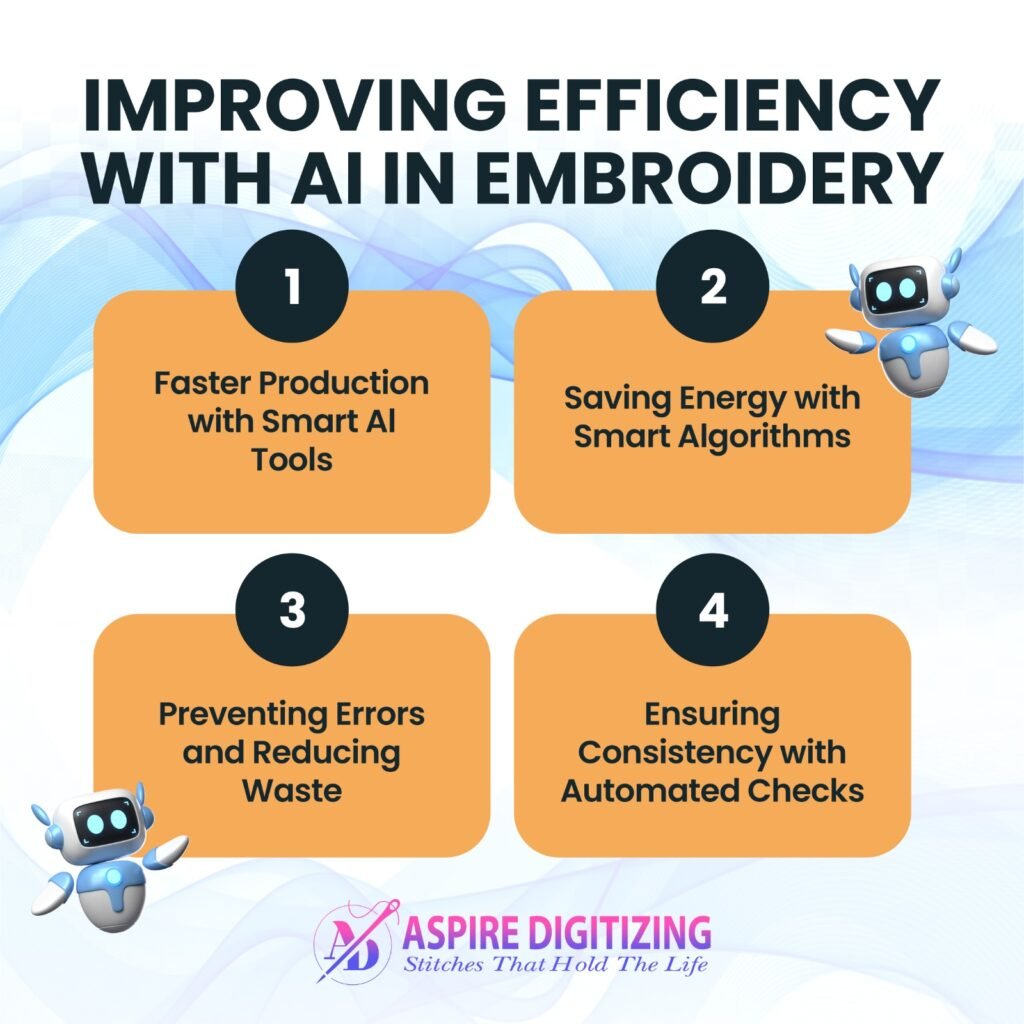
Speedier Production Through Smart Tools
Energy Savings with Optimized Algorithms
Error Reduction and Waste Minimization
Consistency with Automated Quality Checks
1. Speedier Production Through Smart Tools
AI-driven tools automate tasks like stitch selection and optimization. They analyze designs, select the best stitches, and adjust paths to eliminate errors, accelerating production without sacrificing quality.
2. Energy Savings with Optimized Algorithms
AI-powered algorithms reduce energy consumption by optimizing machine runtime and stitch sequences. This not only improves efficiency but also reduces electricity costs.
3. Error Reduction and Waste Minimization
AI identifies design flaws before stitching begins. If a stitch is too dense, AI adjusts it automatically, helping prevent material waste and the need for costly rework.
4. Consistency with Automated Quality Checks
AI ensures design quality through automated checks. It detects issues like uneven stitch density or color mismatches and corrects them instantly, maintaining high standards across all projects.
Practical Applications of AI in Embroidery Design
Here are some real-world applications of AI in embroidery digitizing services:
Automatic Design Conversion: Instantly turns images into detailed stitch files.
Stitch Optimization: Recommends stitch types and adjusts densities.
Custom Design Suggestions: Remembers user preferences and offers similar design styles.
Real-Time Error Detection: Spots and fixes errors before stitching.
Accurate Color Matching:Selects the right color tones for specific designs.
Optimized Stitch Paths: Reduces production time and avoids thread breakage.
These applications are making embroidery digitizing services smarter, faster, and more personalized.
AI's Role in Promoting Sustainable Embroidery Practices
AI is also supporting eco-friendly advancements in embroidery. Here’s how:
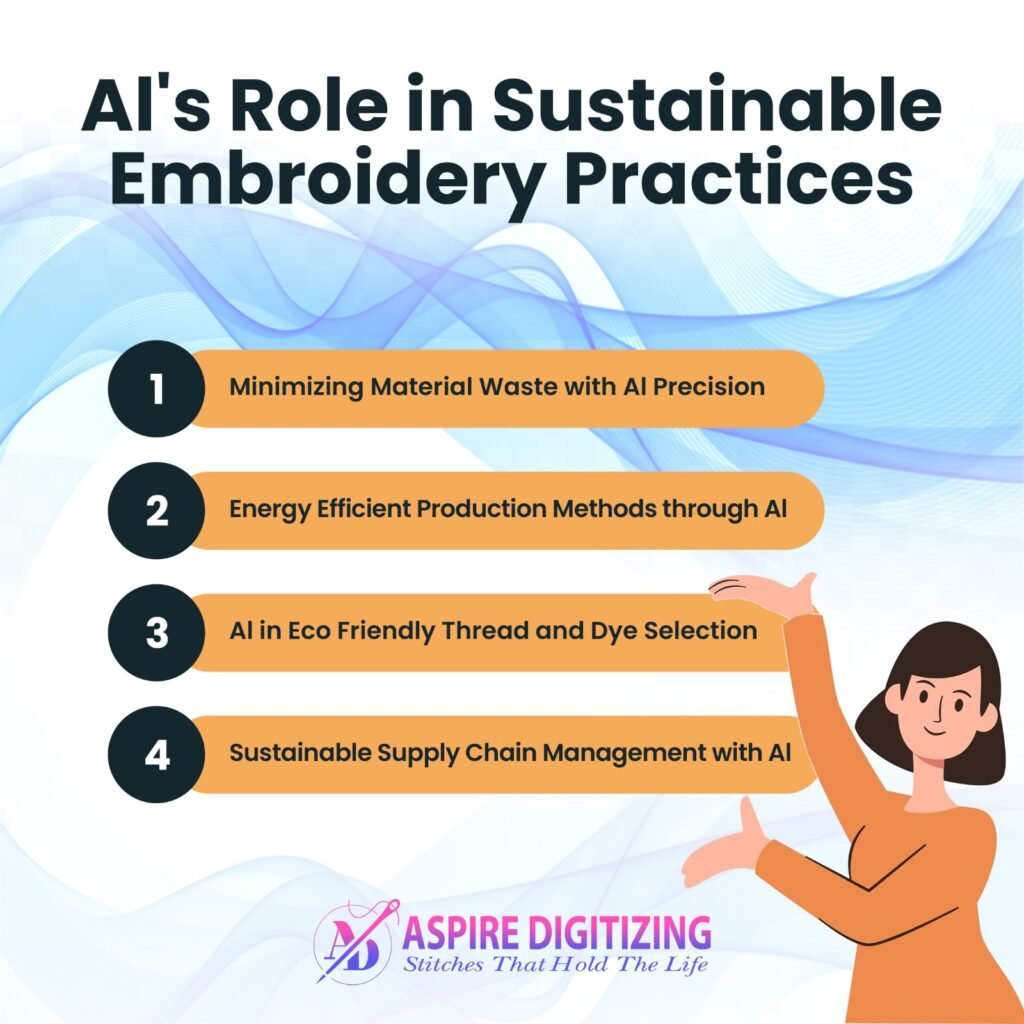
Reducing Material Waste with Precision Stitching
Energy-Efficient Machine Operations
Eco-Friendly Thread and Dye Recommendations
Sustainable Supply Chain Management
1. Reducing Material Waste
AI optimizes stitch paths and densities, minimizing fabric and thread waste. This results in cost-effective and environmentally responsible production.
2. Energy-Efficient Machine Operations
Smart algorithms reduce power usage by improving machine efficiency, lowering electricity consumption, and supporting greener production.
3. Eco-Friendly Thread and Dye Recommendations
AI can suggest sustainable threads and dyes tailored to specific fabrics, enabling businesses to reduce their environmental impact through informed material choices.
4. Sustainable Supply Chain Management
AI enhances inventory accuracy and ensures responsible sourcing, reducing excess stock and promoting ethical supply chain practices.
Integrating AI with Other Technologies
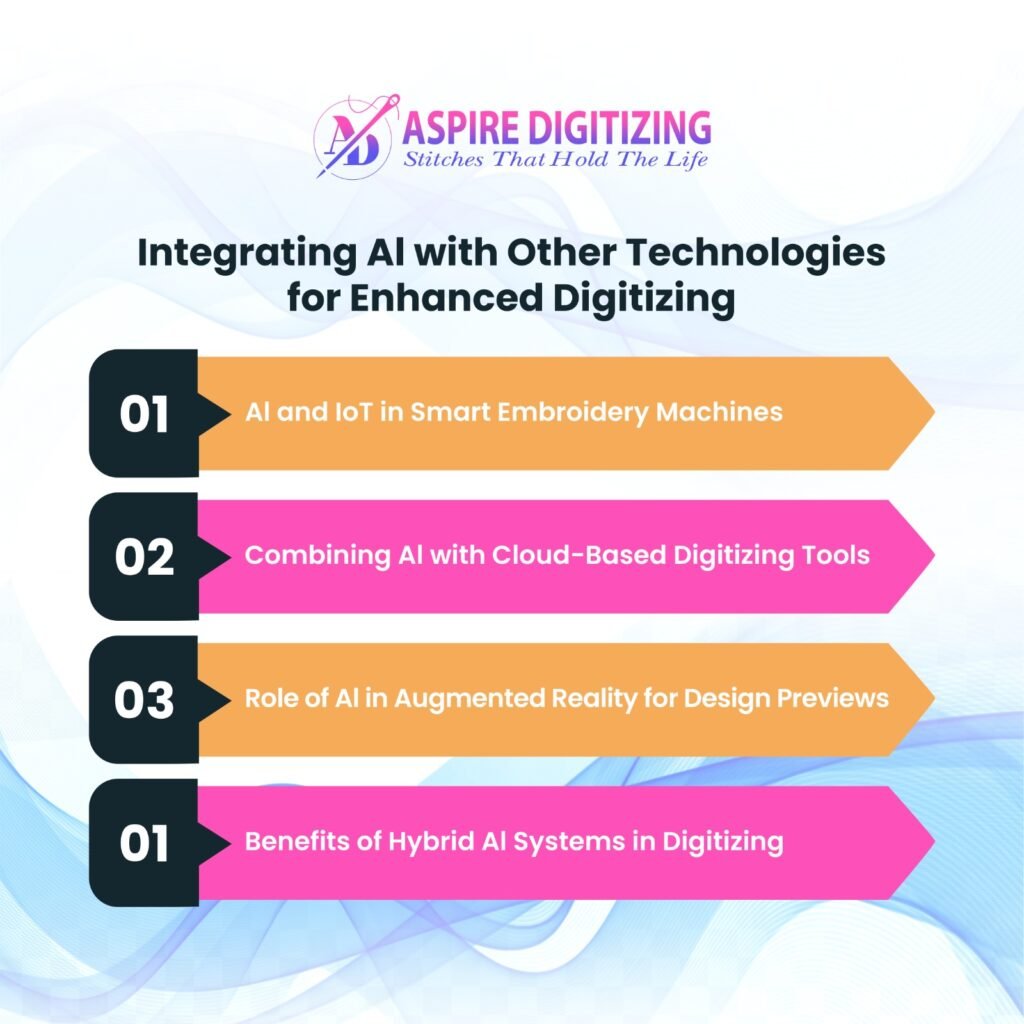
Combining Artificial Intelligence with other emerging technologies is taking embroidery digitizing services to an entirely new level. Here’s how this powerful integration is shaping the future of the industry:
Smart Embroidery Machines (AI + IoT):
Intelligent machines connected through the Internet of Things (IoT) collaborate with AI tools to automatically adjust settings, monitor performance, and deliver precision embroidery with minimal manual input.
Cloud-Based Tools:
Designers and digitizers can access embroidery files, AI-driven suggestions, and project data from any location, ensuring seamless collaboration and real-time updates across teams.
Augmented Reality (AR) Previews:
AR technology enables customers and digitizers to preview embroidery designs on garments in real time before actual stitching begins, reducing trial-and-error and improving design satisfaction.
Hybrid AI Systems:
These systems combine AI automation with human creativity, offering the perfect balance between speed and artistic quality, especially for complex or customized embroidery projects.

Conclusion
While AI has significantly improved embroidery digitizing services, it still can’t fully replicate the creativity and precision of skilled human digitizers. AI handles routine tasks efficiently, but detailed and artistic designs still need expert human input.
That’s why Aspire Digitizing stands out in the market. We blend technology with craftsmanship to deliver exceptional results. Our embroidery digitizing services are not just fast—they’re also precise, affordable, and tailored to your needs.
Enjoy a 50% discount on your first order and experience the difference with Aspire Digitizing—where quality meets innovation!
FAQs
What is Digitization in AI?
Digitization in AI means converting physical processes or designs into digital formats using AI tools, making the process faster and more efficient.
What is the Best Software for Embroidery Digitizing?
Top embroidery digitizing software includes Wilcom, Pulse, and Melco—each offering features like auto conversion and stitch optimization.
Is AI Part of Digitalization?
Yes, AI plays a crucial role in digitalization by automating workflows, analyzing data, and driving smart innovations.
What are the 3 Main Steps of Digitization?
Data Collection
Digital Conversion
Integration and Analysis




